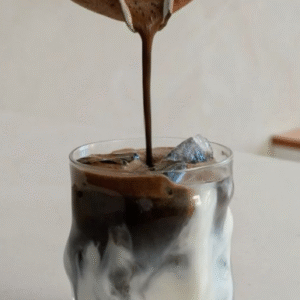We’ve all seen the matcha moment. From lattes in minimalist cafes to endless TikToks showing off the perfect whisk, matcha has been the go-to green tea for the wellness crowd. But there’s another Japanese tea quietly brewing its own fanbase. Say hello to Hojicha roasted, mellow, and just the right kind of cozy.
But is it really the new matcha?
Let’s break it down.
So, what exactly is Hojicha?
Hojicha (also spelled hoo-jee-chah) is a roasted Japanese green tea that is totally different from what you might expect. It comes from the same plant as matcha “Camellia sinensis” but the way it’s processed is a whole new story. Instead of being steamed and finely ground into that iconic bright green powder, Hojicha is roasted over high heat.
The result? A warm, earthy tea with cozy caramel notes, zero bitterness, and way less caffeine.
It first appeared in Kyoto, Japan in the 1920s, originally as a way to repurpose leftover tea leaves and stems. But the toasty flavor turned out to be a win, and it quickly became a staple in Japanese homes and restaurants. Now, Hojicha is becoming a global trend especially with wellness crowds, sleepy and café culture fans who are looking for a more healthier alternative..
Hojicha vs. Matcha vs. Regular Green Tea
Let’s be real, the only thing Hojicha, matcha, and typical green tea have in common is that they all technically come from the same plant. After that? Totally different panths..
Matcha is vibrant, grassy, and high-key caffeinated. It’s your 9AM study buddy, your wake-up call. Regular green tea sits somewhere in the middle lightly grassy, slightly bitter, and usually consumed for its clean, health-conscious vibe.
Hojicha, though? It’s in its own lane. Roasted, reddish-brown in color, and way more chill. If matcha is your espresso shot and regular green tea is your basic black coffee, Hojicha is the cinnamon oat milk latte you sip on a rainy evening. The aesthetic is slower. Softer. Calmer.
Why People Are Switching
It’s not just the taste according to people on the internet (though, let’s be honest “the nutty, toasty flavor is elite”). Hojicha is winning hearts for a bunch of reasons. The biggest one? It’s naturally low in caffeine. We’re talking around 7 to 15 mg per cup making it perfect for people who get tremors (from caffeinated drinks), crashes, or anxiety.
It’s also gentler on digestion, thanks to the roasting process that removes a lot of the acidity and bitterness. And like all green teas, it still packs antioxidants so you’re not totally giving up the wellness perks. Plus, it’s super versatile: you can drink it hot, iced, as a latte with oat milk, or even sweetened with caramel or cinnamon. However you like it, Hojicha will get it.
How It’s Made
The magic of Hojicha starts in the roasting process. Green tea leaves (sometimes mixed with stems or twigs) are roasted at high temperatures. This kills bitterness, reduces caffeine, and brings out a rich, caramelized flavor that sets it apart from other teas.
Where to Try It in Egypt
Hojicha is still finding its place in Egypt’s café scene, but a few spots have already caught on.
Eight Ounce in Garden 8 offers an iced Hojicha latte that’s smooth and well-balanced.
Nana’s in Majarah Mall also serves it up with their signature twist. (cinnamon or dates syrup)
It’s not as common as matcha (yet), but it’s slowly making its way into local menus.
Soo…Is It the New Matcha?
Not exactly.
It’s not here to replace matcha but it’s definitely finding its own space. Hojicha is for people who want a softer energy, a cozier cup, and a more relaxed ritual. It’s for the slow mornings, the chill afternoons, and the unwinding evenings.
So, while it might not be the new matcha, it might just be better for you.
Are you Team Matcha or Team Hojicha?
If you like bold, grassy flavors and a caffeine boost, matcha’s still your go-to.
But if you’re craving something mellow, toasty, and more chill than hype Hojicha is worth the try.






